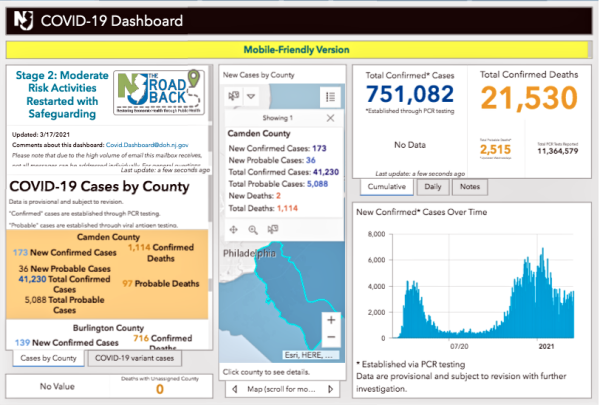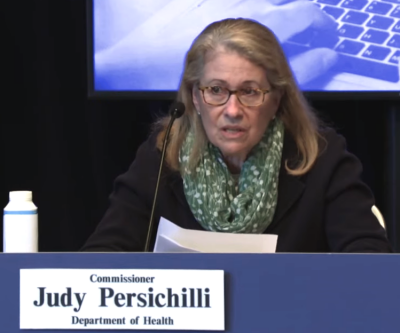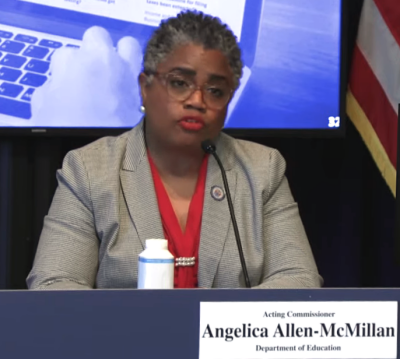Even as the state crosses its 3-million-vaccine threshold, COVID-19 activity levels across most of New Jersey have increased in the past two weeks. Officials urge maintaining pandemic protocols.
By Matt Skoufalos | March 17, 2021
Another 3,047 New Jersey residents have tested positive for novel coronavirus (COVID-19), bringing the statewide total to 751,082 cases confirmed via polymerase chain reaction (PCR) testing, Governor Phil Murphy reported Wednesday.
New Jersey is also reporting 1,017 new COVID-probable cases based on antigen tests, bringing the statewide total to 97,794 positive antigen tests.
Antigen tests have a faster turnaround time than PCR tests—sometime within 15 to 30 minutes—but are less reliable at detecting active infection of the virus and more capable of reporting false positives.
Sadly, 38 more residents have perished from complications related to the virus, bringing the statewide, confirmed death toll to 21,530 lives lost during the pandemic.
In addition to those lab-confirmed fatalities, the state has acknowledged another 2,515 probable COVID-19-related deaths—41 more than previously reported.
Since March 2020, 743 of every 100,000 New Jersey residents have been hospitalized with COVID-19, and 244 of every 100,000 have died from COVID-19-related complications.
More than 11.364 million polymerase chain reaction (PCR) tests for COVID-19 have been performed statewide, with an 8.50-percent positivity rate per 100,000 residents.
Rate of transmission (Rt) at 1.05, spot positivity lowest in South Jersey
The statewide average of COVID-19 spot positivity testing based on PCR test results stood at 11.87 percent March 13; in South Jersey, it was lowest, at 8.97 percent.
Rt, the variable that describes the seven-day, rolling-average, statewide rate of transmission of new COVID-19 cases, hit 1.05 on March 15.
An Rt figure greater than 1.0 means that each new COVID-19 patient is infecting more than one other person, on average, and the spread of the virus is increasing.
Since its mid-April-2020 COVID-19 spike, the highest reported RT in New Jersey was 1.48, recorded August 1, 2020. The lowest was 0.62, recorded June 9, 2020.
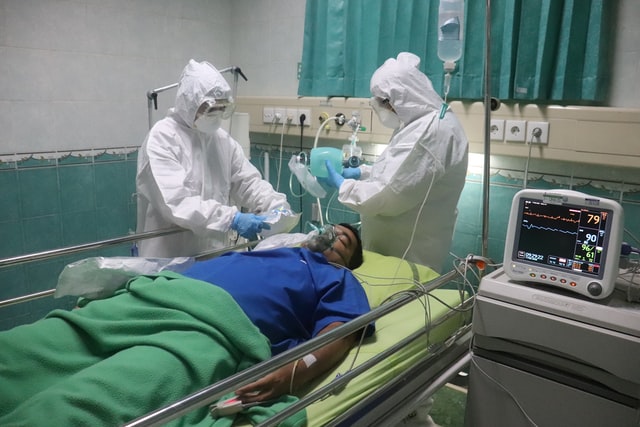
Simulated COVID-19 patient in a hospital bed. Photo by Mufid Majnun on Unsplash
Hospitalizations continue to trend downward
Throughout New Jersey, 1,895 people currently are hospitalized with a suspected (113) or confirmed (1,782) case of COVID-19, Murphy said.
Among those hospitalized patients, 407 are in intensive or critical care, and 231 of the ICU and critical-care patients (57 percent) are on ventilators.
In New Jersey’s 71 critical care hospitals, 265 patients were hospitalized with COVID-19 yesterday, while 246 others were discharged.
Across the state, long-term care (LTC) centers have reported 1,287 cumulative outbreaks of COVID-19, and 244 are dealing with an active outbreak. LTCs account for 53,700 infected patients and staff in New Jersey, or 7.1 percent of total cases.
That includes 32,425 residents and 21,275 staffers sickened by the virus, as well as 7,959 lab-confirmed resident and staff deaths (37 percent of the statewide confirmed total), with facilities self-reporting 143 staff deaths.
Of 656 veterans residing in three state-run homes, 439 residents have tested positive for COVID-19, and 220 have died from complications related to the virus.
Presently, 12 veterans are hospitalized with COVID-19; 422 have recovered from the virus.
At state-run psychiatric facilities, 333 of 1,129 patients and 971 staff members have tested positive for COVID-19. Fourteen patients and eight staffers have died from complications related to the virus.
MISC cases and schools
To date, 106 New Jersey children aged 1 to 18 have been diagnosed with pediatric multisystem inflammatory syndrome (MISC), according to New Jersey Health Commissioner Judy Persichilli.
All those pediatric patients have tested positive for an active COVID-19 infection or the presence of COVID-19 antibodies, indicating exposure to the virus. No deaths have been associated with this syndrome in New Jersey, although several children have been hospitalized during their treatment.
Since August 1, 188 COVID-19 outbreaks encompassing 890 individual cases have been traced to schools in 19 New Jersey counties. In Camden County, 14 outbreaks have been linked to 70 cases, third-most in the state.
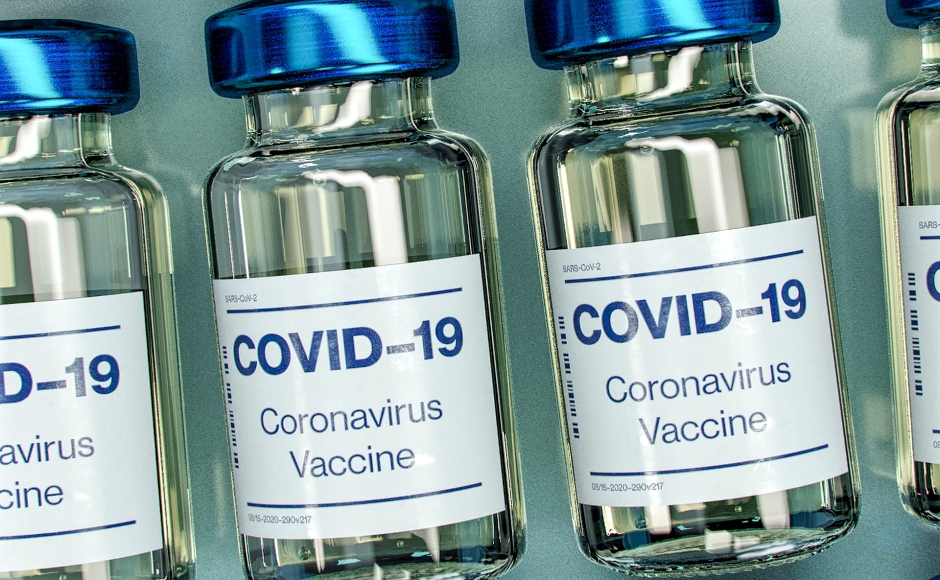
COVID-19 vaccine bottle mock-up. Photo by Daniel Schludi on Unsplash
Vaccination update
Across the state, 3.143 million inoculations have been administered to date: 2.091 million first doses, and 1.051 million second doses.
In Camden County, 192,243 doses have been administered; seventh-most in the state.
The first vaccines in the state were administered December 15; by February 8—55 days later—New Jersey had immunized its millionth resident. Twenty days thereafter, that count hit 2 million. Yesterday, the state crossed the three-million-vaccination threshold a little more than two weeks after hitting 2 million.
CVS, Walgreens, and Rite Aid are prioritizing vaccination appointments for educators and child care workers, with Walmart setting aside a minimum of 10,000 doses weekly for seniors 65 and older, the governor said.
‘UK’ variant could become dominant variant strain in America, NJ ‘backsliding’ into increase in cases
Mutated offshoots of COVID-19, or “variants of concern,” continue to circulate throughout New Jersey; Persichilli reported that the state has traced 209 such cases to date.
At 206 cases, the most common COVID-19 variant in the United States is the B.1.1.7, or “UK” variant, which has been spotted in at least 16 New Jersey counties.
“We are closely monitoring the trajectory of COVID-19 in the U.K. because it is now the dominant strain in that country,” Persichilli said.
The first case of the B.1.351, or “South African” variant, in New Jersey was identified last week, and the state now has two reported cases of the P.1 “Brazilian” variant. Instances of strain B.1.526, which has been reported as originating in New York, have also been reported.
Dr. Eddy Bresnitz, Medical Advisor to the NJDOH, pointed out that the “UK variant” could be the predominant variant strain in America “by the end of March,” according to federal projections.
“When it would peak depends on how many people in a state are infected with the variants, but it’s also affected by the number of people who get vaccinated,” Bresnitz said.
“To the extent that people adhere to the non-pharmaceutical interventions, those will also impact the transmission of the virus and also impact when there might be a peak,” he said.
Finally, Persichilli noted that, according to the New Jersey COVID Activity Level Index (CALI), which offers a regional picture of the spread of the pandemic across the state, the Central West and Northwest regions have slid back to orange, indicating high transmission of the virus there.
“Every region besides the Southeast and Southwest has shown some backsliding in the past few weeks, primarily driven by increasing case counts,” the commissioner said .
Students back to school in the fall, NJ seeking federal standardized testing waiver
Citing limited instances of in-school transmission of the virus, Murphy said he expects that all schoolchildren will return to full-time, in-person instruction for the 2021-2022 academic year.
Since August 1, 2020, only 800 of 565,000 confirmed COVID-19 cases have been attributed to in-school transmission, the governor said.
Of course, most schools in the state have been operating in a hybrid model, with limited in-person instruction since that time.
Presently, schools across New Jersey are offering one of several instructional models:
- 534 are operating in a hybrid model (843,394 students)
- 142 are open fully, for in-person instruction (107,498 students)
- 98 are offering remote learning only (317,044 students)
- 37 are providing a combination of the three models (85,541 students)
Acting New Jersey Commissioner of Education Angelica Allen-McMillan said, “The safe return to in-person instruction is among our foremost priorities.
“The more time that a student spends away from in-person instructional time, the greater the risk of learning loss, and of social, emotional, and mental health impacts for our students,” Allen-McMillan said.
“These setbacks in educational development will not be spread evenly among all students,” she continued. “Students with disabilities, English learners, low-income students, black and Hispanic students, and students experiencing homelessness or in foster care are often the hardest-hit by the disruptions in school closures.”
To combat the impact of these challenges, the state Department of Education is seeking a federal waiver of its requirements to conduct statewide assessments, and has dedicated $1.2 billion in grant funding for schools seeking to address the impact of the pandemic.




